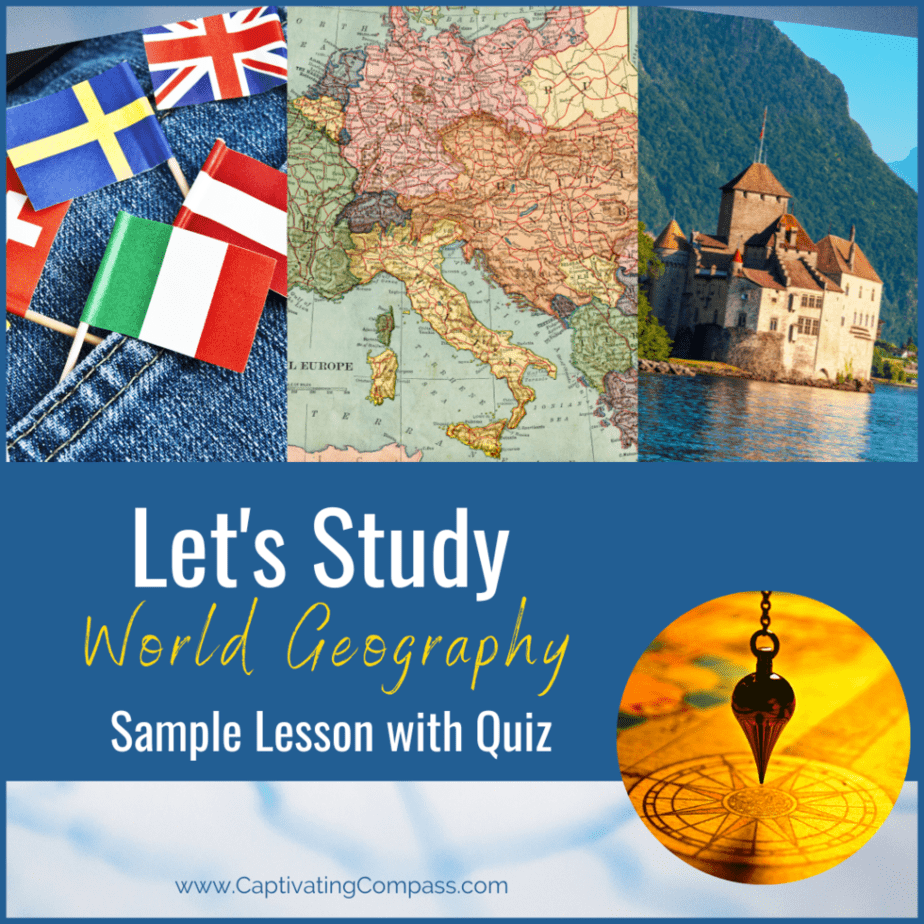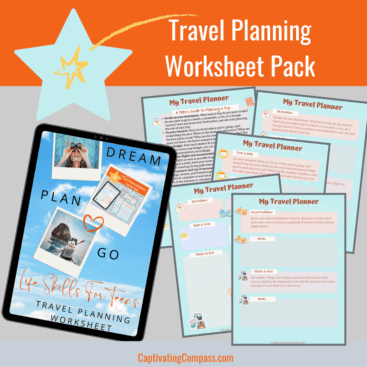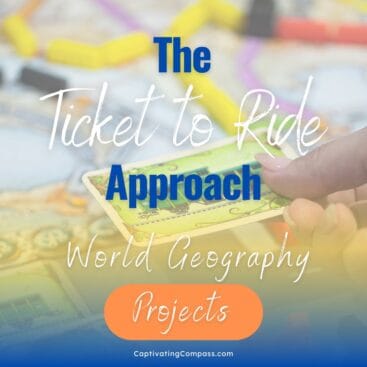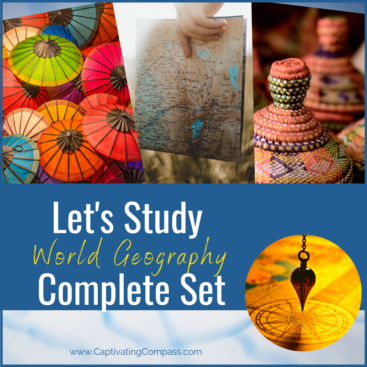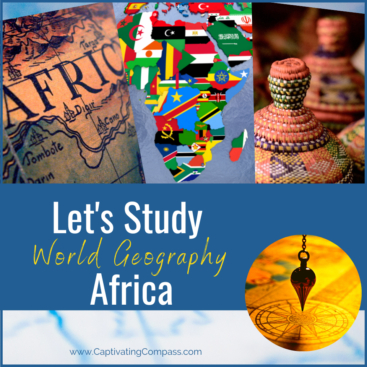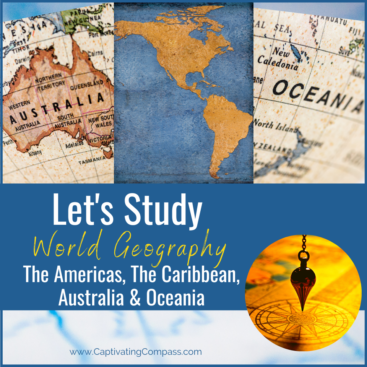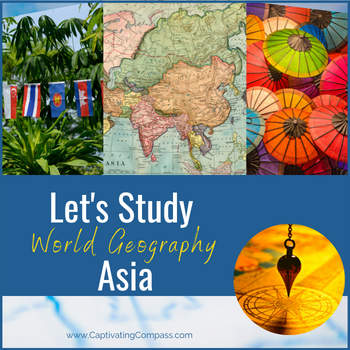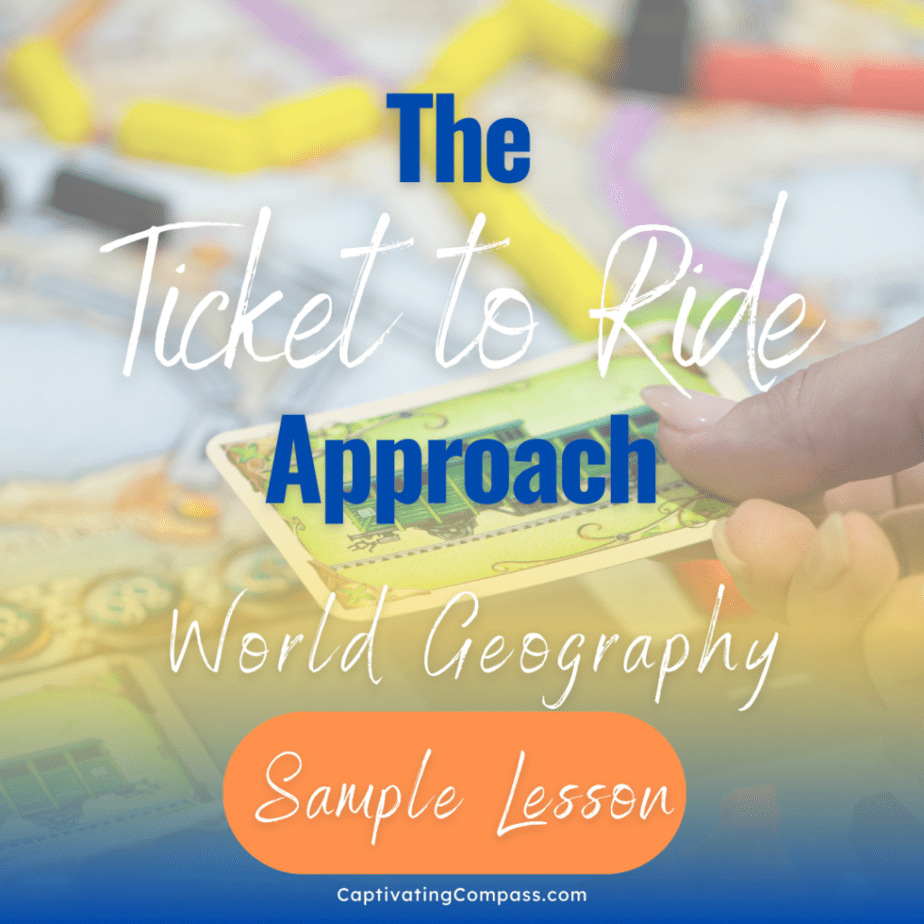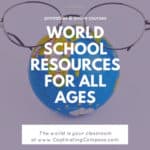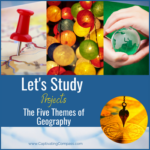
Table of Contents
What are the Five Themes of Geography?
The 5 themes of geogrphy geography are location, place, human & environment interaction, movement, and region. Each theme is important and can be exciting to learn about for high school students. To help you learn the layers of high school geography in your homeschool, use the five themes of world geography as often as you can. Include your middle schoolers when you study human geography and cultural geography at the high school level. It’s a great way to earn high school credit for a geography course.
I’ll show you some awesome resources to make your daily lessons fun, but first, let’s better understand each of these geography themes and then give special emphasis on how to use them in your homeschool.
Location

Every point on Earth has a specific location that is determined by an imaginary grid of lines denoting absolute location on the surface of the Earth. To know the absolute location of a place is only part of the story. It is also important to know how that place is related to other places – in other words, to know that place’s relative location. Relative location deals with the interaction that occurs between and among places. It refers to the many ways – by land, by water, even by technology – that places are connected using latitude and longitude coordinates.
The basic ‘Location’ question you want your homeschooler to be able to answer is ‘Where is it located?’
Their answers can fall into two categories – Absolute & Relative.
Answers that are absolute would include:
- A physical address
- Longitude & latitude coordinates or GPS coordinates
Answers that are relative would include:
- Around the corner
- Next to the mall
- A zip code or postcode (without a specific address)

Ways To Add Location To Your Geography Lessons
- Mapping copy work
- Mapping games
- Using a GPS app to map and follow to a destination
Place

In social studies, all places have characteristics that give them meaning and character and distinguish them from other places. Place is a theme of geography that conjures up a mental picture of a place with people going about their everyday lives in a familiar environment. So, whether is in the United States, or in the middle of Southeast Asia, ‘place’ is the personality of geography.
The basic ‘Place’ question you want your homeschooler to be able to answer is ‘What is this location like?’
Their answers will describe a place’s physical geography and human characteristics
Answers that are physical geography characteristics would include:
- Animal life,
- terrain (mountains deserts, rivers, etc)
Answers that are human characteristics would include:
- architecture, patterns of livelihood, land use and ownership, town planning, and communication and transportation networks, because these are man-made.
- languages, as well as religious and political ideologies.
- Customs, holidays
These help shape our understanding of human geography and the character of a place by allowing expression in its various forms.
There are many others, but this gives you a good framework, to begin with.
Ways to add Place to your Geography lessons
- Celebrate a country’s cultural holiday.
- Look at old photos and modern photos of a location and compare the difference
- Research the government and political issues of a country
- Enjoy the culture of a specific country through food, music, folk stories, and art. Research the different cultures of indigenous peoples in one of the many world regions
Human/Environment Interaction

The basic ‘human/environment interaction’ questions you want your homeschooler to be able to answer are:
- How are people dependent upon the environment?
- In what ways do people adapt to their environment?
- What modifications have people made to their environment?
Answers will focus on interaction, cause, and effect, or problem-solving solutions. Here are a few examples:
- In ancient Egypt, the annual flooding of the Nile River produced fertile land that allowed for crops to be grown.
- Egyptians rebuilt their homes annually after each flood. Eventually, they moved to higher ground to avoid flooding.
- Over time, they built irrigation ditches to water the crops more regularly and eventually built a dam on the Nile River.

Ways To Add Human/Environment Interaction To Your Geography Lessons
- Read about current events and identify dependence, adaptation, or modifications made as humans interact with their environment.
- Read historical accounts with the objective of finding how previous societies identified and solved problems
- Examine stories of cause and effect between humans and the environment – both positive and negative. Explore the idea of human activity through news archives. Include the study of natural forces on the physical environment as well as human behavior and the impact on a specific country of the world.
Movement

People interact with other people, places, and things almost every day of their lives. We travel from one place to another; we communicate with each other, and we rely upon products, information, and ideas that come from beyond our immediate environment.
The basic ‘movement’ question you want your homeschooler to be able to answer is: How does movement connect places?
You may want to break it down into more manageable ideas by asking the 5’W’ questions: who, what, where, when, and why do things, people, and information move? And don’t forget to consider ideas about how they move crossed the boundaries of political geography and if there is an impact on the economy of the people in the different countries..
Answers will focus on patterns of movement and can be local or global. Here are a few example questions:
- What route did you take to the store?
- Why did humans arrive in North America?
- How did the Egyptians solve the problems caused by the flooding Nile River?
Movement can be abstract or concrete. Studying movement within specific regions can contribute to a better understanding of the development of the human characteristics of a place, such as; cultural traits, governmental practices, and tolerance of diversity.

Ways to add Movement to your study of the world and geography
- Challenge students to research a country’s transportation history of its waterways or roads.
- Research how or why political boundaries changed using a wide variety of sources. Make special note of any change in economic development and any creative ways for positive outcomes that news reports document.
- Ask ‘Has the movement produced a positive or negative impact on society?’
Region

A region is an area on the earth’s surface that is defined by certain unifying characteristics. Regions can be formal areas with specific boundaries or areas with loose boundaries. A region must contain similar, unifying characteristics that are physical, natural, human, or cultural.
The basic ‘region’ question you want your homeschooler to be able to answer is: How are areas connected to each other?
Answers will focus on similar, unifying characteristics that are physical, natural, human, or cultural. Here are a few examples:
- Southern Africa countries (as opposed to South Africa, which is one of the countries in Southern Africa)
- Danube River Basin
- New England Colonies
- ‘Wine Country’
Regions can change over time due to changes in climate, economic conditions, accessibility of trade routes, and many other factors. The theme of regions is important in terms of our learning to manage the differences and similarities of global cultures which allow our world to function as a unit.
Ways to add Region to your Geography lessons
- For a comprehensive understanding, including lesson plans that teach students to research and map the language boundaries of a continent.
- Explore agriculture or economic trade (imports & exports) and map the goods/resources of a region or continent to understand the various regions.
- Explore characteristics such as architecture or even facial characteristics of an area for similarities and differences over time or through migration.
Projects for Learning about the 5 Themes of Geography
Exploring the 5 themes of world geography can seem overwhelming and even possibly boring, but with the right project for the right age group, it can be so much fun! For younger kids, k-4th grade, country studies that have hands-on activities such as cooking, traditional dress, and music are always fun.
Middle and high school kids need projects that are a bit more robust and complement world geography or continent studies. Get your teens critically thinking about the different parts of the world and geography in an exciting way, with this project pack that is included with each continent study. The projects can work well for individual countries or continents or for a collection of projects interspersed throughout a full-year world geography curriculum.
resources For your Passport to FUN!
The Let’s Study World Geography series is available by continent or as a complete 36-week (full-year) curriculum set. Each bundle incorporates opportunities to explore each of the 5 themes of geography.
Capture the beauty of our world and the curiosity of your homeschooler with the Let’s Study World Geography curriculum bundle. – SS
The ‘Let’s Study World Geography’ curriculum is perfect for busy homeschoolers needing a digital homeschool curriculum to explore the world of geography at home, in the car, on the train, or at the airport. The digitally accessible lessons and worksheets are perfect for homeschool families that want to explore geography using the world as their classroom.
No more cobbling your curriculum together and hoping it works! Everything you need is included in this World Geography complete set!
Don’t Miss This Let’s Study World Geography Sample Lesson!
You May Also Enjoy
- Your World Schooling Curriculum for all ages
- What are the 5 Themes of Geography?
- Viterbo Italy – The Etruscan Museum
- Visit Edinburgh: 9 Budget-Friendly Activities Not to Miss.
- Virtual Museum Tours For Doing School At Home
- United States Homeschool Resources
The Latest from Captivating Compass
- Let’s Study Famous Folks – April Calendar Of Famous People
- Let’s Study Famous Folks – March Calendar of Famous People
- Printable Cornell Note Taking Template | High School
- Summer Mission Trips for Teens: 2024 Planning Guide
- Let’s Study Famous Folks – February Calendar Of Famous People
- Geography Activities for Kids & Teens: Homeschool Resources

